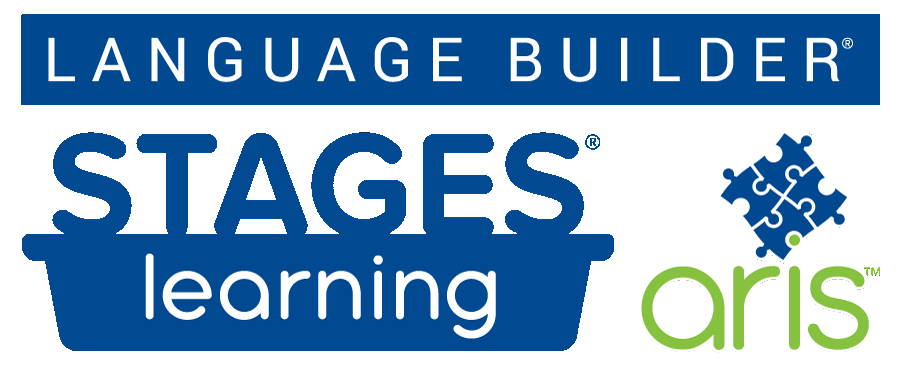
These six tips will help you create a proactive environment in your home to foster task productivity and offer solutions to address undesired behaviors before they arise. By adopting a proactive approach, you are creating a structured and consistent environment that will help your child succeed. If you consistently react to behaviors, work to shift your approach and provide more support and scaffolding to prevent behaviors from occurring. Naturally, your child may exhibit behaviors even with foundational supports in place. That is okay! Look to these guiding factors to address challenging behaviors.
1. Manage expectations of productivity: Start where they are.
You may feel burnt out by behaviors if you are holding too high of expectations for your child. Start where they are. What are they working on? What tasks absolutely need to get done, what should get done, and what can wait a bit? If you ask your child to complete a 10-item checklist and provide no room for breaks or preferred activities, your child’s productivity will likely be lower than desired. Be realistic with what your child is capable of, where you want to push them, and what scaffolding you can provide to get them there.
2. Continuously practice whole-body listening with your child.
“Show me your eyes, please.” “I’m looking for listening ears.” “Show me a calm body, please.”
“When my voice is on, your voice is off. When your voice is on, my voice is off.”
 Phrases like these help reinforce desired behaviors from your child when you are relaying a direction or asking a question. Even playing a game similar to “Simon Says” can help identify what body parts are required for whole-body listening and also acts as a compliance check.
Phrases like these help reinforce desired behaviors from your child when you are relaying a direction or asking a question. Even playing a game similar to “Simon Says” can help identify what body parts are required for whole-body listening and also acts as a compliance check.
“Put your hands on your ears. Okay, now point to your mouth. Put your hands in your lap.”
These are just a few examples of ways you and your child can get ready together to focus on a conversation or a future task. Like any skill, practice makes perfect! And it doubles as modeling when you work on these skills with your child.
3. Structure your days with clear and consistent checklists, mixed in with choices and earned rewards.
Structure and consistency! In my time as a behavioral counselor at a therapeutic school, I have probably filled out hundreds of checklists for my students who needed a visual reminder of their responsibilities. What are the tasks you want your child to complete? Break down your child’s day into various checklists. Start by focusing on 30 minutes at a time and adjust as you become comfortable. After they finish what is on your checklist, you can reward them with an earned break involving a preferred activity. The time for the earned breaks can vary depending on how small or large the tasks were; however, the reward should feel worth the work to your child.
Here is a sample checklist that you can download to fill out for your child.
 Offer choices on their checklist when possible, as this contributes to their autonomy. When they complete tasks, consider offering them a menu of earned rewards. They can even help you create this menu! (We love autonomy!) This will keep their preferred activities fresh and exciting and also make them feel like they have some say in the rewards they work towards. Their earned break time can also increase if you know your checklist contains more challenging items for your child. For example, if errands are tricky and not preferred, consider offering a longer break with more enticing reward options. I would advise keeping your earned break times between five and 15 minutes. If your child is unable to finish their checklist due to task-avoidant behaviors, they will not earn their break. Remind them that they can work towards their next break with their next checklist. I urge you to focus on positive support and promoting positive behaviors in these moments.
Offer choices on their checklist when possible, as this contributes to their autonomy. When they complete tasks, consider offering them a menu of earned rewards. They can even help you create this menu! (We love autonomy!) This will keep their preferred activities fresh and exciting and also make them feel like they have some say in the rewards they work towards. Their earned break time can also increase if you know your checklist contains more challenging items for your child. For example, if errands are tricky and not preferred, consider offering a longer break with more enticing reward options. I would advise keeping your earned break times between five and 15 minutes. If your child is unable to finish their checklist due to task-avoidant behaviors, they will not earn their break. Remind them that they can work towards their next break with their next checklist. I urge you to focus on positive support and promoting positive behaviors in these moments.
It can be easy to dangle the, “if you don’t do _______, you won’t get your break!” verbiage. Shift the narrative to encouraging and positive. “How can I help you get on track so you can earn your break?” or, “I notice your body is looking tired/energetic/angry/upset, what do you need to get back on track to earn your break?”
4. Do not be afraid to wait and offer regulatory breaks when needed.
In my role as a behavioral counselor, I must continually remind myself of all the neurological components occurring in the brains of my autistic students. Processing speed is real! And while we may be on a strict timeline or feel the task is easy and quick, the same may not apply to an autistic child. If behaviors are escalated, do all you can to offer strategies that will bring them back to baseline behavior. Deep breathing, weighted blankets, safe objects to rip or throw, screaming into a pillow, or even a hug may work for your child. However, sometimes your child will need more time to regulate than you may realize.
5. When behaviors escalate, ask your child what they need.
Disclaimer: If behaviors are escalating to an unsafe and aggressive point, please have a plan in place to receive more help if needed. You know your children best and what you individually as a parent or caregiver can manage when behavior escalates to these points.
 I once read a book by University of Virginia President Jim Ryan, titled Wait What? And Life’s Other Essential Questions. I have pocketed a lot of his advice, but the one question I ask the most to my students at school is, “How can I help?” If your child’s behaviors escalate and are manageable within the home, work to get them to a safe space to feel their feelings. If it is their bedroom, an open space, or a sensory area you have in the house for these moments, guide them there. When they are in a place to hear your words, ask them how you can help. Some answers may be far-fetched or implausible, some may be a straightforward, “You can’t,” but some are incredibly telling.
I once read a book by University of Virginia President Jim Ryan, titled Wait What? And Life’s Other Essential Questions. I have pocketed a lot of his advice, but the one question I ask the most to my students at school is, “How can I help?” If your child’s behaviors escalate and are manageable within the home, work to get them to a safe space to feel their feelings. If it is their bedroom, an open space, or a sensory area you have in the house for these moments, guide them there. When they are in a place to hear your words, ask them how you can help. Some answers may be far-fetched or implausible, some may be a straightforward, “You can’t,” but some are incredibly telling.
In my first summer at the therapeutic school I work at, I had a student leave the classroom unannounced after I asked them to write something down with a pencil. They ran to one of our regulatory offices across the hall, to which I followed. I prompted them to take their space, and that when they were ready, I would love to know what they need and how I could be helpful. In due time, this student yelled, “Ms. Fowler, I am really frustrated! Do you want to know why!?” Of course, I did. Soon I learned that their sensory needs allowed them to use a pen instead of a pencil and they were mad that I didn’t know that. I could have classified them running across the hall as just another task-avoidant behavior we see at our school, but with those questions “What do you need?” and “How can I help?” I found both the problem and the solution.
Do not be afraid to unveil these answers! Give your child space to calm down, but always come back to what made them feel that way. Chances are a similar task may evoke similar behaviors in the future. In these moments you can hear your child’s needs while also brainstorming proactive supports to help them achieve the task next time.
6. Positively reinforce desired behaviors, identify what behaviors need to be redirected, and always return to the task after your child has calmed down from escalated behaviors.
Identify ways to provide, at the moment, immediate reinforcement for your child when they are on task. Perhaps your child has a sticker chart and earns stickers when they are exhibiting desired behaviors or completing certain tasks. This sticker chart may translate to a greater reward they are working towards. Verbal praise also goes a long way.

If behavior escalates from a certain task or expectation, do what you can to regulate your child before behaviors become bigger. Can you offer a strategy? Can you take a break? If behaviors result in a time-out, make sure you return to the task when your child has calmed down. This allows your child to understand that the expectation is still present. If they do not meet the expectation at that moment, they will before they move on to preferred activities.
Keep track of behaviors and progress.
Often when we are working on behavior and are on the front lines of trying to make changes it can be hard to see the progress. Therefore, it is very helpful to collect data. When we collect data, we can reflect on the numbers and see the progress and that we are moving in the right direction. A good resource for behavior data collection sheets is the downloadable behavior tracking sheets (daily and weekly) from the ARIS® Academic Readiness Intervention System curriculum. ARIS is a curriculum designed to teach young learners skills from sitting and attending to early reading and writing skills. The curriculum offers simple data collection for both the lessons as well as behavior intervention.
If you’re a parent of a child with special needs, here are some additional resources you might find helpful:
- Cerebral Palsy Family Network - A compassionate community that provides resources for loved ones with cerebral palsy
- Learn about Financial Planning For Kids With Special Needs





